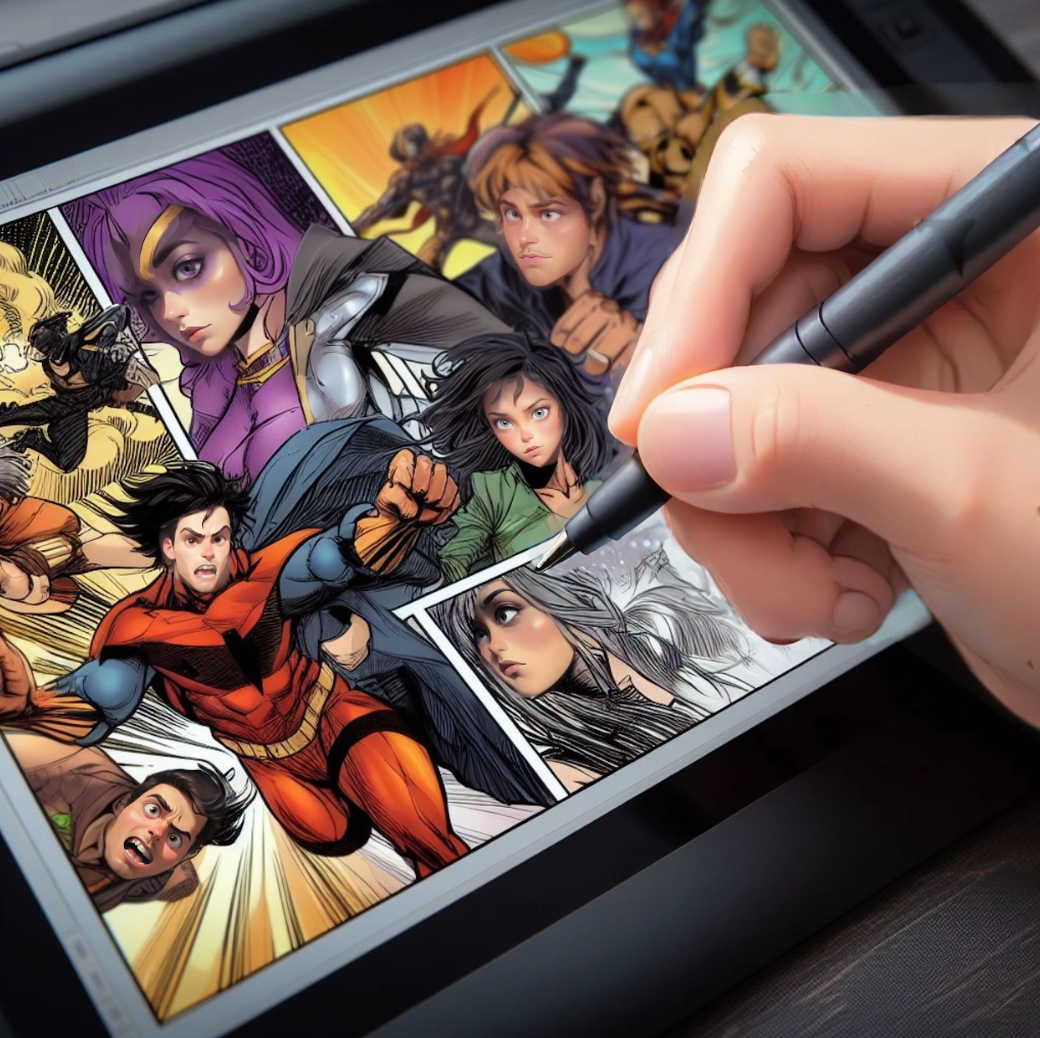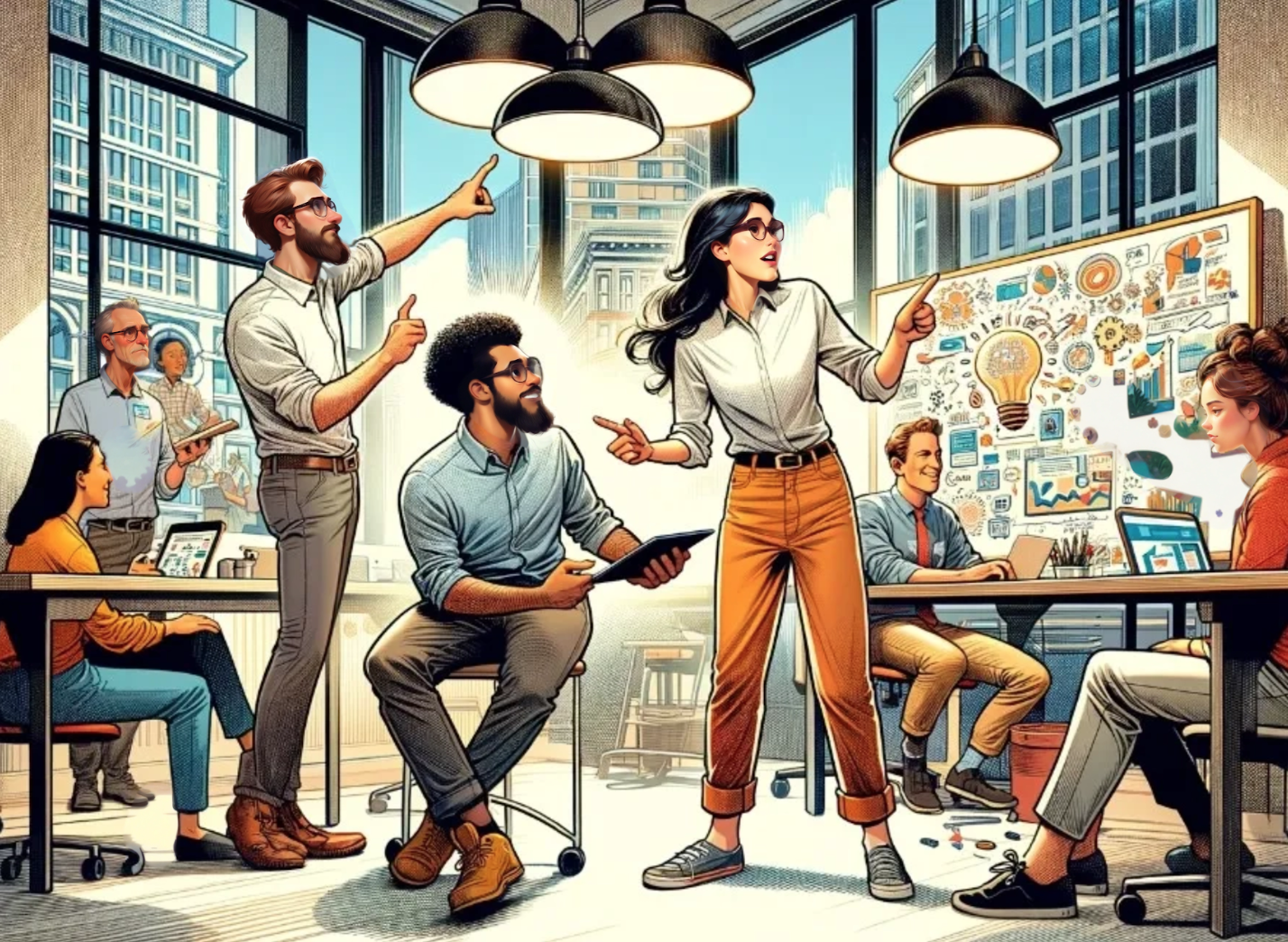Creating Your Own Comic Book Design: Essential Steps for Layout and Theme
Explore AI to create unique & consistent characters with techniques like prompt engineering & custom model training - to captivate your audience.

Introduction to Creating Consistent Character Using AI
“AI is replacing humans” - well, I think this statement isn’t true. It is important to understand how powerful AI is and how we can use it for our benefit. One such example is creating comic characters using AI tools. This blog talks about the art of developing consistent characters with AI, ensuring your comic maintains its essence across different contexts and panels. The guide features two different methods: without model training and with model training. If you're looking to unleash your creativity and explore the world of AI-generated comics, check out Dashtoon's AI Comic Generator.
In the ever-evolving digital world, creating consistent characters using AI has definitely made the process of comic creation easy and enjoyable. With the advent of AI tools, artists and creators now have the ability to craft captivating and consistent characters with AI across various platforms and mediums. This consistency is key to building a long-lasting connection between the characters and their viewers.
Importance of Maintaining Uniform AI-generated Character Designs Across Various Contexts
A well-designed character is often the key to a successful story. Maintaining consistent characters with AI across different contexts, such as games, animations, comics, or merchandising, is crucial for building a unique and recognizable brand identity. Inconsistent designs can lead to confusion, a lack of emotional connection, and a poor reading experience for the audience.
Maintaining uniform AI-generated character designs across various contexts offers numerous benefits, including:
- Visual Storytelling: Comics rely on visual storytelling, and consistent character designs help readers easily identify and follow the characters throughout the narrative.
- Seamless Integration and Clarity Across Multiple Platforms and Mediums: Characters that look consistent across different media provide a comprehensive experience that reinforces the story's credibility and holds the audience’s attention.
- Strengthened Brand Recognition and Audience Engagement: Consistent character designs make it easier for audiences to recognize and form emotional attachments to the characters - enhancing loyalty to the storyline.
- Character Development: As characters evolve and undergo changes throughout the story, maintaining consistent designs ensures that readers can recognize and connect with these characters, even when there are transformations in the storyline.
- Enhanced Storytelling and World-Building in Comic Books: In comic books, consistent character appearance helps maintain narrative continuity and aids readers in following the story across multiple issues and series. It ensures that the character remains identifiable and relatable, regardless of the storyline or setting variations. This consistency is crucial in comics, where visual storytelling is a key component and character appearance can convey important traits and emotions.
- Improved User Experience and Immersion: When characters maintain the same appearance, it helps create a more immersive and engaging user experience. Readers or viewers can easily transition between different stories or media without disruption, enhancing their overall engagement with the content.
If you're new to the world of comic book creation, check out Dashtoon’s blog post on “How to Create a Comic Book” to get started.
Overview of Methods to Achieve Character Consistency: Without Model Training and With Model Training
Achieving consistent characters with AI involves two main methods:
- Without model training
- With model training
Each has its benefits and applications:
Without model training, consistency can be achieved through detailed planning, style guides, and manual adjustments:
- Develop comprehensive character design documents and style guides
- Use of standardized character sheets that detail all visual and personality traits
- Utilize AI-powered image generation tools with careful prompting and guidance
- Manually refine and adjust AI-generated designs for consistency
- Application of strict design guidelines across all media formats to ensure uniformity
On the other hand, with model training, consistent characters with AI can be generated more efficiently and accurately:
- Train custom AI models on a curated dataset of character designs
- Development of AI models that learn from existing character data to reproduce consistent traits automatically
- Pre-trained models for specific character styles or designs
- Use of deep learning to adapt characters dynamically to different scenarios while maintaining core characteristics
For those interested in exploring the art of comic book sketching and character design, check out our blog post on “Exploring Comic Book Art”.
Method 1: Without Model Training

Creating AI consistent characters without the need for a complex model training approach is helpful for content creators. This method ensures that character consistency is maintained across various digital media without engaging in the technical intricacies of AI training. Continue reading to understand more about this model.
Starting With a Precise Initial Prompt
To achieve high-quality AI consistent characters, starting with a clear initial prompt is the key to success. Detailing every aspect of the character, including distinct visual traits, personality, and background settings - ensures that the AI has a strong foundation to generate images that align with the creator’s vision.
Craft an initial prompt that encapsulates the following elements:
- Physical attributes (e.g., body shape, facial features, hair style)
- Clothing or costume details
- Personality traits and mood
- Contextual elements (e.g., environment, props)
Prompt Diversifications for New Settings and Poses
Once you have the initial design, creators can take advantage of prompt diversification to generate AI consistent characters in new settings and poses. Adjusting details like background, attire, and activities can enrich the character's portrayal without compromising consistency.
Explore prompt diversifications by incorporating:
- Descriptive action words for different poses
- Environmental details for varying settings
- Mood or expression modifiers
Using the Character's Name and Visual Descriptions Consistently
Maintaining consistent use of the character’s name and detailed visual descriptions in every prompt is essential. Ensuring that you use the same descriptive language and reference points across prompts will help reinforce the AI's understanding of your character's appearance and traits.
Varying the Wording of Prompts to Avoid Repetitive Images
While consistency is essential, it's also important to introduce variations in your prompts to prevent the AI from generating repetitive images. To avoid repetitive outputs, ensure to introduce synonyms, alter sentence structures, and include varied contextual details. Experimenting with alternative phrases, synonyms, and unique descriptors helps to encourage the AI to explore new interpretations while staying true to your character's core design.
When to Consider Training a Custom Model for Higher Consistency
While the manual approach without model training can produce satisfactory results, at some point, training the custom model becomes advantageous. If consistently generated characters require more precise control over visual details, consider transitioning to custom model training. This step is beneficial when predefined prompting strategies no longer meet the desired level of precision and consistency in character portrayal.
If you're looking for a simple and efficient way to generate consistent characters, check out Dashtoon's free AI character generator.
Method 2: Training a Custom Model

For creators looking for the highest level of consistency in their characters, training a custom model allows for greater precision in achieving AI consistent characters. This method involves creating a dataset of images that effectively capture your character's essence, which is then used to fine-tune the AI to produce high-quality, consistent outputs. Although this approach requires more time and effort, the results can be truly outstanding.
If you need guidance on training a character from a single image and using it consistently, check out our YouTube tutorial: How to Train a Character from a Single Image and Use it Consistently to Create Your Dashtoon.
Initial Steps to Start Training
Before starting with the training process, it's essential to assemble a detailed collection of reference images that represent your character's appearance and style. The process begins by creating a new dataset specifically named and described to reflect the character or theme you're working on. These images should capture the character from multiple angles - in various poses, and in different settings to provide an overall understanding of the AI model.
Uploading Reference Images
A wide collection of 10-15 reference images that represent your character’s traits is essential. These images form the baseline from which your AI learns to generate the character. Hence, quality and relevance are key.
Training Your Model
Once your dataset with reference images is ready, you can initiate the training process. In this step, the AI model will analyze and learn from the provided images. It will identify patterns and visual cues that define your AI consistent characters. The training might take from a few minutes to a few hours, depending on the complexity of your character and the amount of data provided.
Several factors can influence the training process, including:
- The quality and diversity of reference images
- The computational resources available
- The specific algorithm and techniques used by the training platform
Generating Images With the Fine-tuned Model
After training, you can begin generating images using specific prompts that include the character's name or specific scenarios. This model will have a deep understanding of your character's visual identity, allowing you to create consistent characters across various AI art generation tools and platforms with remarkable precision and consistency.
Refining and Evaluating for Precision and Consistency
Although, the initial results from your trained model may be impressive, it's important to evaluate and refine the output for optimal consistency. It is undoubtedly vital to check the generated images, identify areas for improvement, and consider retraining the model with additional or modified data to address any inconsistencies compared to your desired character design.
Final Tips for Achieving Character Consistency

Creating consistent characters with AI is an art form that requires dedication and attention to detail. It requires a blend of strategic preparation and continuous experimentation. Whether you choose to train a custom model or rely on prompt engineering, reading these final tips will help you elevate the consistency of your character designs - ensuring a seamless experience for your readers.
The Significance of Reference Image Quantity and Quality
- Quantity: More images provide a broader learning base for the AI, enhancing its ability to generalize across contexts.
- Quality: High-resolution and well-lit images from multiple angles provide a comprehensive understanding of the AI model. While, blurry, low-quality, or repetitive images could result in inconsistencies in the model's training
- Relevance: Images must closely align with the character's defining traits to reinforce consistent outputs
Following these factors for your reference images plays a crucial role in achieving consistent characters. Having a diverse and high-quality reference image library is the foundation for creating truly consistent characters with AI.
Experimenting With Prompts and Settings
As we know by now, the way you craft prompts can significantly influence the output of consistent characters with AI. Even with a trained custom model, experimenting with different prompts and settings can unlock new variations and interpretations of your character. This experimentation allows you to refine how the AI interprets and executes your creative vision. You can also make adjustments based on the outcomes to meet your project's artistic requirements.
The Benefit of Repeat Training for Enhanced Consistency
- Repetitive Learning: Repeated training sessions can be beneficial for further refining your characters. This also allows the AI to refine its understanding of your character.
- Feedback Incorporation: Feedback can be used to improve the training process - making character generation more precise. Creators can continuously evaluate the generated images and identify areas for improvement.
- Adaptation to Changes: As your character evolves, retrain your model with updated reference images or modified prompts to address any inconsistencies or deviations.
Repetition and refinement are key to achieving the highest levels of character consistency with AI tools.
Conclusion
In conclusion, creating consistent characters with AI tools is an exciting journey that combines creativity, technical skills, and a deep understanding of AI. Mastering the creation of consistent characters with traditional AI methods and approaches is crucial for storytellers who are looking to enhance their narratives. These methods involve focusing on the quality and quantity of reference images, experimenting with prompts, and repeating the process of model training to ensure that characters remain recognizable and engaging throughout your storytelling journey.
Creating Characters in Dashtoon Studio
Dashtoon Studio revolutionizes character creation by simplifying the entire process. Unlike traditional AI methods that require detailed attention to image references, prompt adjustments, and extensive model training - Dashtoon offers a more streamlined approach. With just one click, storytellers can generate characters that are both unique and consistent with their existing comic universe.
Contrasting Character Creation Methods
While traditional AI character creation demands a considerable investment in time and technical understanding, focusing on iterative adjustments and constant model refinement, Dashtoon Studio simplifies this to a single action. This user-friendly character creation method saves time and ensures that every character adheres to your artistic vision with consistent styling and personality traits.
Unlock your storytelling potential and begin a seamless comic book creation experience with Dashtoon. Our platform uses AI to help you design dynamic comics and characters that captivate and resonate with audiences worldwide. Explore Dashtoon today and elevate your comic book storytelling to a whole new level.
Read Next: How to Create a Comic Book | Exploring Comic Book Art
